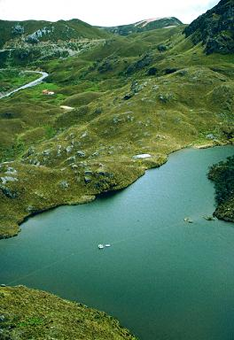NOAA/WDS Paleoclimatology - Trout Lake, Yukon 14,400 Year Midge-Inferred July Temperature
This archived Paleoclimatology Study is available from the NOAA National Centers for Environmental Information (NCEI), under the World Data Service (WDS) for Paleoclimatology. The associated NCEI study type is Lake. The data include parameters of insect|paleolimnology with a geographic location of Yukon Territory, Canada. The time period coverage is from 14400 to 0 in calendar years before present (BP). See metadata information for parameter and study location details. Please cite this study when using the data.
Dataset Citation
- Cite as: Irvine, F.; Cwynar, L.C.; Vermaire, J.C.; Rees, A.B.H. (2012-06-30): NOAA/WDS Paleoclimatology - Trout Lake, Yukon 14,400 Year Midge-Inferred July Temperature. [indicate subset used]. NOAA National Centers for Environmental Information. https://doi.org/10.25921/hfqp-ve18. Accessed [date].
- Please refer to Credit tab for full citation information.
Dataset Identifiers
- doi:10.25921/hfqp-ve18
- noaa-lake-13094
- NCEI DSI 1200_02
- NCEI DSI 1200_01
ISO 19115-2 Metadata
noaa-lake-13094
| Search Data |
|
| Download Data |
|
| Distribution Formats |
|
| Ordering Instructions | Contact NCEI for other distribution options and instructions. |
| Distributor |
NOAA National Centers for Environmental Information ncei.info@noaa.gov |
| Dataset Point of Contact |
NOAA National Centers for Environmental Information ncei.info@noaa.gov |
| Dataset Point of Contact | Data Center Contact NOAA World Data Service for Paleoclimatology 828-271-4800 paleo@noaa.gov |
| Coverage Description | Date Range: 14400 cal yr BP to 0 cal yr BP; |
| Time Period | -12450 to 1950 |
| Spatial Bounding Box Coordinates |
West: -138.75
East: -138.75
South: 68.828
North: 68.828
|
| Spatial Coverage Map |
| General Documentation |
|
| Associated Resources |
|
| Publication Dates |
|
| Data Presentation Form | Digital table - digital representation of facts or figures systematically displayed, especially in columns |
| Dataset Progress Status | Complete - production of the data has been completed |
| Data Update Frequency | Data update frequency not available |
| Supplemental Information | STUDY NOTES: Fossil midge larval data and inferred mean July air temperature, plus pollen data and Loss-on-Ignition data from Trout Lake, northern Yukon covering the past 14,400 years. Trout Lake, Yukon: 68.828°N, 138.75°W, 150m elevation, ~9m water depth. ABSTRACT SUPPLIED BY ORIGINATOR: Two cores from Trout Lake, northern Yukon, yielded quantitative estimates of summer air temperatures using fossil midge larvae. Warming began around 14,400 cal yr BP, with inferred mean July air temperatures reaching values warmer than present by 12,800 cal yr BP. A 1°C cooling from 12,200 to 11,200 cal yr BP closely corresponds with the Younger Dryas chronozone. A broad temperature maximum occurred between 10,800 and 9,800 cal yr BP, with mean July air temperature about 2.2 °C warmer than present. This represents an early Holocene thermal maximum and coincides with increased organic content of the sediment. Both the shallow- and deep-water cores show similar temperature trends for their overlapping periods. The inferred rise in mean July air temperature at 14,200 cal yr BP coincides with a shift in vegetation from an herb- to shrub-dominated landscape. In contrast, the increase in Alnus pollen at 6,400 cal yr BP does not coincide with a change in temperature, but may be a response to a rise in precipitation. |
| Purpose | Records of past climate and environment derived from lake sediment records. Parameter keywords describe what was measured in this dataset. Additional summary information can be found in the abstracts of papers listed in the dataset citations. |
| Dataset Citation |
|
| Cited Authors |
|
| Originators |
|
| Publishers |
|
| Theme keywords |
Global Change Master Directory (GCMD) Science Keywords
|
| Data Center keywords |
Global Change Master Directory (GCMD) Data Center Keywords
|
| Place keywords |
|
| Use Constraints |
|
| Access Constraints |
|
| Fees |
|
Last Modified: 2024-03-11
For questions about the information on this page, please email: ncei.info@noaa.gov
For questions about the information on this page, please email: ncei.info@noaa.gov

